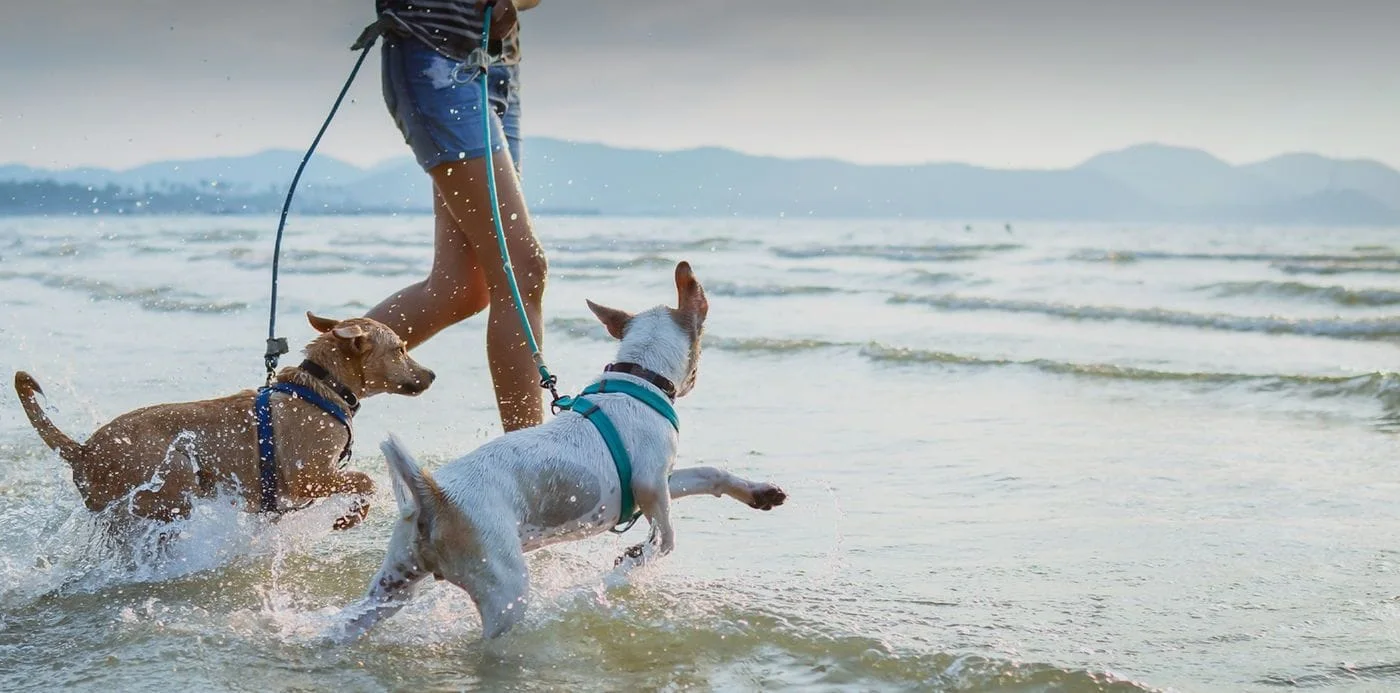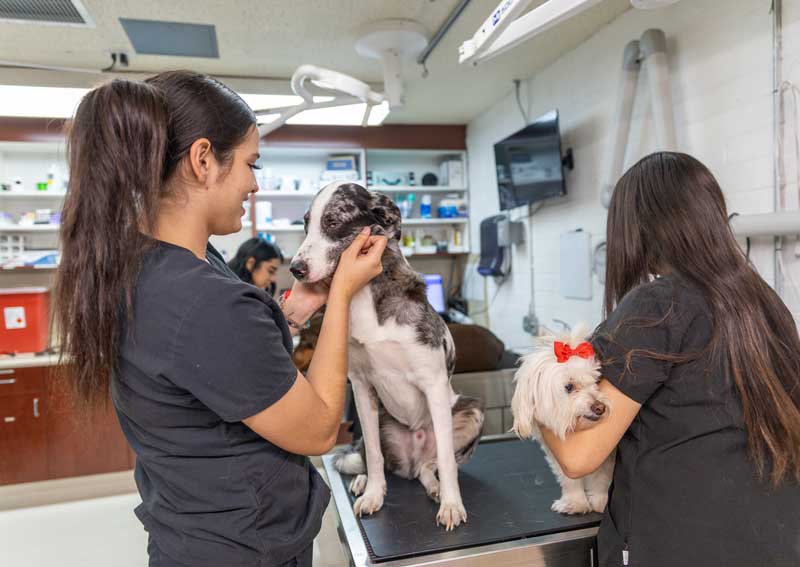Signs Your Dog Might Need canine tplo surgery: Vet-Approved Checklist
Signs Your Dog Might Need canine tplo surgery: Vet-Approved Checklist
Blog Article
Everything About Veterinarian Surgical Procedure: Recognizing the Significance of Expert Take Care Of Your Family pets
Veterinary surgical treatment is an important element of family pet medical care. It encompasses different treatments, from routine elective surgical procedures to urgent interventions. Recognizing the details of these surgical procedures can help pet dog owners make informed choices. The prep work, execution, and healing phases are important for ensuring the health of animals. With appropriate knowledge, owners can navigate the intricacies of vet care. What factors should be considered before a pet dog undergoes surgical treatment?
Kinds Of Vet Surgeries
When a pet requires medical treatment, comprehending the numerous kinds of veterinarian surgical procedures can help family pet owners make notified choices. Veterinary surgical procedures can be broadly classified into 3 major types: optional, immediate, and emergency situation surgical treatments. Elective surgical procedures, such as spaying or neutering, are prepared procedures that are not immediately life-threatening. Urgent surgical treatments, like those for foreign body removal, should be carried out soon however are not life-threatening in the moment. Emergency surgeries, such as those addressing serious injury or inner blood loss, are critical and require instant attention.Additionally, surgical treatments can vary in intricacy, ranging from minimally invasive laparoscopic treatments to more substantial open surgical treatments. Each sort of surgery carries its very own dangers and recuperation processes. Recognizing these groups allows family pet owners to take part in significant conversations with veterinarians, resulting in much better outcomes for their beloved animals.
Planning for Your Pet dog's Surgical procedure
Getting ready for an animal's surgical procedure includes a detailed checklist to ensure all fundamentals are covered. Reliable interaction with the veterinarian is important for comprehending the procedure and any kind of needed pre-operative steps - tplo surgery for dogs. In addition, having clear post-operative treatment directions will certainly aid owners give the very best assistance for their recovering pets
Pre-Surgery Checklist Basics
Ensuring a smooth surgical experience for a pet calls for mindful preparation and attention to information. A pre-surgery list is vital for family pet proprietors to adhere to. First, verifying the set up surgical treatment day and time is crucial. Owners need to also verify that their pet has actually not eaten according to the veterinarian's directions, typically for 8-12 hours before surgery. Gathering needed medical records, including vaccination background, is very important for the veterinarian's review. It is likewise advisable to prepare a comfy room at home for the pet dog's recuperation after surgical treatment. Lastly, owners must have a strategy for transportation to and from the vet clinic, making certain that the pet is secure and comfy throughout the trip. Adhering to these actions can significantly improve the medical experience.
Interacting With Your Veterinarian

Effective interaction with the veterinarian is crucial for a successful surgical experience for animals. Owners must be prepared to review their pet dog's case history, consisting of any kind of pre-existing conditions, drugs, and allergic reactions. This information aids the veterinarian analyze threats and tailor the surgical strategy appropriately. Furthermore, animal proprietors must ask concerns relating to the treatment, anesthesia, and anticipated results to guarantee they fully understand the procedure. Making clear any uncertainties can relieve anxiety for both the pet dog and the proprietor. It is also vital to connect any type of behavior modifications or concerns observed in the pet leading up to the surgery. Eventually, clear dialogue cultivates depend on and collaboration, making certain that pets get the finest possible care during their surgical trip.
Post-Operative Treatment Directions
After discussing the surgery with the vet, family pet proprietors ought to concentrate on post-operative care instructions to promote a smooth recovery for their family pets. These instructions typically include checking the surgical site for indications of infection, such as soreness or discharge. Animals may need to be maintained tranquil and confined to avoid extreme movement that might interfere with recovery. Discomfort administration is crucial, so owners must follow the veterinarian's support on providing medications. Furthermore, dietary limitations may be suggested to avoid stomach trouble. Normal follow-up consultations are necessary to assure appropriate healing and deal with any kind of issues. By sticking to these post-operative care directions, pet owners can considerably contribute to their pet's recuperation and total wellness.
The Surgery Explained
The medical process for pets encompasses essential actions that assure their safety and recovery. Pre-surgery prep work are important for reducing risks, while post-operative treatment guidelines play an important duty in advertising recovery. Understanding these parts assists pet dog proprietors navigate the medical experience better.
Pre-Surgery Preparations
Prior to a pet undertakes surgical procedure, numerous vital prep work have to take location to guarantee a risk-free and successful procedure. A complete vet exam is essential to assess the pet dog's overall wellness and determine any kind of potential risks. This may consist of blood examinations, imaging, or various other diagnostics. The vet will certainly also discuss anesthetic alternatives tailored to the pet's certain needs. Furthermore, pet proprietors are generally advised redirected here to withhold food and water for a defined time prior to surgery to lessen the danger of problems during anesthetic. It is essential for proprietors to supply a total case history, consisting of any kind of medications or allergic reactions, making sure the medical group has all essential details. Appropriate communication and adherence to pre-surgery standards can greatly boost the result of the treatment.
Post-Operative Treatment Standards
Proper post-operative treatment is crucial for making certain a family pet's recovery adhering to surgical procedure. After the treatment, pet dogs need to be kept an eye on closely for any type of signs of issues, such as excessive bleeding, swelling, or uncommon actions. It is crucial to adhere to the vet's directions concerning medications, consisting of painkiller and antibiotics. Animals ought to be maintained in a quiet, comfy environment to lower tension and promote recovery. Limiting task is essential; short, leashed walks may be required, however leaping or running ought to be stayed clear of. Normal follow-up consultations must be arranged to analyze the healing procedure. Additionally, the surgical site has to be kept clean and dry, with any type of indications of infection reported to a vet quickly. Sticking to these standards enhances healing end results.
Anesthesia and Pain Monitoring
Reliable anesthesia and pain management are important parts of veterinary surgical treatment, making sure that pet dogs remain comfy and safe throughout the treatment. Veterinarians evaluate each pet's private demands, thinking about factors such as age, weight, health status, and the type of surgical treatment being performed.Anesthesia procedures commonly include a mix of pre-anesthetic medications, induction agents, and inhalant anesthetics, permitting accurate control over the animal's degree of awareness. Surveillance throughout surgical procedure is crucial; veterinarians continuously observe vital indicators to address any kind of possible difficulties promptly.Pain management dog vet near me strategies may entail opioids, non-steroidal anti-inflammatory medications (NSAIDs), and neighborhood anesthetics, customized to the pet's certain situation. This multifaceted strategy helps lessen pain and promotes a smoother medical experience. By prioritizing reliable anesthetic and discomfort monitoring, veterinary professionals improve the total welfare of pets going through operations, guaranteeing they obtain the highest possible requirement of treatment.
Post-Operative Care and Recuperation
Complying with surgery, the focus changes to post-operative care and healing, which is essential for making sure a pet's safe return to typical tasks. Throughout this period, family pets require a silent, comfortable setting to aid healing. Owners must closely check their pet dogs for any kind of signs of discomfort or unusual behavior.Veterinary standards frequently include particular directions associated to medicine management, wound treatment, and nutritional modifications. It is essential to comply with these referrals to decrease difficulties and advertise recovery. Family pets may need to be limited from strenuous activities, such as running or jumping, during their healing period (tplo surgery for dogs).Regular follow-up appointments with the vet enable tracking of the pet dog's progression and timely modifications to the treatment plan. Giving emotional support and friendship can also enhance a pet's healing experience, assisting to relieve stress and anxiety and anxiousness. In general, persistent post-operative treatment plays a considerable role in achieving an effective recovery
Recognizing Complications After Surgical Treatment
Exactly how can animal owners recognize difficulties after surgical treatment? Awareness of specific signs is essential for guaranteeing the wellness of pets throughout recovery. Common indications include extreme swelling, soreness, or discharge at the surgical website, which might represent infection. In addition, relentless discomfort, shown by whining or unwillingness to relocate, must trigger immediate interest. Adjustments in appetite or water consumption can additionally indicate problems; a decline in these habits might indicate discomfort or distress.Moreover, pet owners need to monitor their family pets for any uncommon actions, such as lethargy or trouble breathing, as these can be indications of significant concerns. Vomiting or looseness of the bowels following surgical treatment may require urgent vet examination. Identifying these issues early can greatly affect a pet dog's recovery process, stressing the relevance of alertness and prompt communication with a veterinarian for any worrying symptoms.
The Role of Veterinary Professionals in Surgical Care
Veterinary specialists play a necessary function in guaranteeing the safety and security and success of operations for family pets, especially following surgery when keeping an eye on and care are extremely important. These specialists include vets, veterinary technicians, and support personnel, every one of whom add specialized skills to the surgical process.Before click to read surgery, veterinarians conduct detailed analyses to evaluate the family pet's wellness, ensuring that any hidden problems are managed. Throughout the procedure, the surgical team offers anesthesia, keeps clean and sterile settings, and monitors vital signs, very important for decreasing risks.Post-operative treatment is just as substantial; vet professionals observe for problems, manage discomfort, and guide owners on recovery techniques. Their expertise allows them to recognize early indicators of distress or infection, making certain prompt treatment. Inevitably, the collaborative initiatives of vet experts in surgical treatment promote a safe environment, advertising the wellness of pets throughout the surgical trip.

Regularly Asked Concerns
How Do I Choose the Right Veterinary Doctor for My Animal?
Picking the ideal vet cosmetic surgeon entails researching credentials, reading evaluations, and evaluating the center's setting. It is necessary to assess the surgeon's experience with specific treatments and their communication design when choosing.
What Prevail Misconceptions Regarding Veterinarian Surgeries?
Typical misunderstandings about vet surgical treatments include beliefs that they are always dangerous, unnecessary, or just for emergencies. Numerous family pet proprietors underestimate the benefits of precautionary procedures and the ability entailed in veterinary medical treatment.
How Much Will My Animal's Surgical procedure Price?
The cost of a pet's surgery can vary significantly based upon variables such as the kind of procedure, the veterinarian's experience, and geographic location (24 hour vet near me). Typically, expenses vary from a couple of hundred to a number of thousand dollars

Can My Family Pet Consume Prior To Surgical Treatment?
Before surgery, it is typically encouraged that family pets abstain from eating for a particular duration. This fasting helps in reducing the threat of complications during anesthesia. Owners must consult their vet for exact instructions tailored to their pet's needs.
What if My Family Pet Has Pre-Existing Wellness Conditions?
When a pet dog has pre-existing health and wellness conditions, it's vital for the veterinarian to examine these aspects before surgery. This evaluation assurances proper preventative measures are taken, decreasing dangers and optimizing the pet dog's general safety throughout the treatment.
Report this page